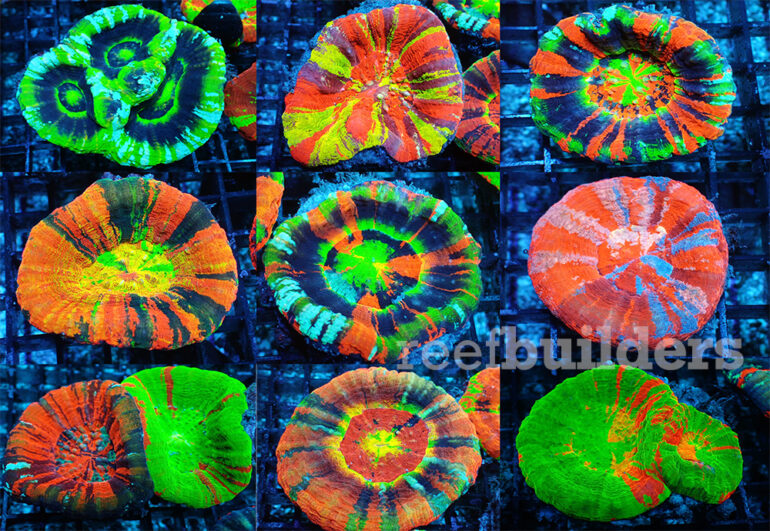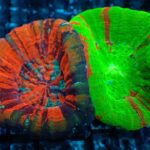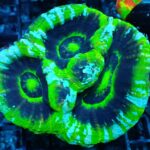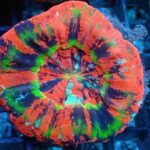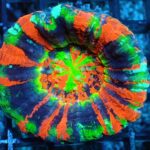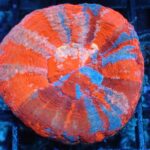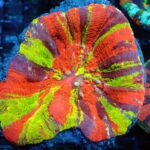CoralMonster is a coral dealer in Japan with a knack for scoring some high profile livestock and today we want to take a minute to appreciate their recent haul of Homophyllia australis. Better known as Scolies or Australian scolymia, this group of LPS corals is so well known in the reef aquarium hobby that it needs no introduction.
The range of colors and diversity of patterns that Scolies are capable of makes them easily one of the top contenders for brightest and most high profile corals you can get for your reef tank. Rivaled only by the premium specimens of Acanthophyllia donut corals, the Australian Scolies really hit the genetic jackpot if points are tallied by how beautiful and corals these corals are.
No matter how many Rainbow, incredible, master, spirograph, and UFO colored specimens we’ve seen in person and in pictures, there’s something about how eclectic they look that never gets old, and it seems like there’s almost always more combinations to surprise us. We are mostly all familiar with the ‘master’ Scolies that feature every color of the rainbow in eccentric stripes, usually with a nice dark ‘UFO’ style ring to accentuate them.
But two other broad groups of Homophyllia australis that are quite unique and popular are the specimens with either a yellow to orange coloration, and the multiheaded specimens and double scolies. Yellow and orange are among the rarest and most sought after colors of Australian scolies, even though in the early days very few collectors paid attention to them.
Meanwhile the multiheaded scolies are sometimes double or triple heads of the same coral, and other times they are two separate and contrasting corals that settled out and grew together in the same place. On average we’d estimate that these three categories represent roughly one in a thousand specimens of wild harvested Australian scolymia. If there’s one group of corals that would benefit the most from captive breeding and propagation efforts it’s the wildly colorful and popular Scolies but until then, we’ll have to admire these boujee corals in the tanks of more affluent collectors.


